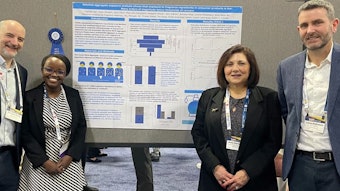The fragrance industry had its voice heard in the U.S. Congress on Wednesday, March 18, 2015, at 11:00 A.M. Eastern U.S. time.
During a session titled "Red Tape: New Challenges for Small Manufacturers," Cynthia Reichard, executive vice president, Arylessence, Inc., testified on behalf of the International Fragrance Association of North America. Reichard's comments come as TSCA reform moves to a new, hopeful stage.
Click here to view the video.
In an oral testimony, Reichard shared one example of Arylessence's experiences in complying with the Occupational Safety and Health Administration's (OSHA) Hazard Communication Standard (GHS) and said increasing regulatory burdens limit reinvestment in the company and employees.
Although she said GHS was billed as a cost-saving device, with an estimated $585 million in annual savings for employers, "in truth GHS is the opposite," Reichard stated. "It is neither global nor harmonized, and has taken us three years to implement, and cost us over half a million dollars and untold labor hours … all without safety benefits to employees."
Reichard further explained that manufacturers and distributors must identify and classify chemicals based on what she called a "complicated GHS hierarchy."
All of this information, she added, must be included on safety data sheets, or SDSs, and labels which must be affixed to workplace products. Labels must include color pictograms and informational symbols, signal words and "lengthy" hazard statements, said Reichard.
"OSHA’s different treatment of samples is problematic for industry," Reichard added. "Canada and the EU allowed for small package exemptions; OSHA did not. Despite pleas from manufactures this results in a costly and incredibly burdensome process. Now, rather than requiring a SDS only on products purchased, each small sample, must include the complex labeling and safety data communications."
She continued: "Arylessence sends 10,000 samples per year—now, requiring thousands of safety data sheets and labels for half-ounce samples that may never be sold. In addition, OSHA has issued no guidance as to how labels are affixed to small packaging. Without this label attached to this bottle we are subject to severe OSHA fines."
This is just one example of how small businesses in the industry continue to struggle due to the increasing costs of regulations, according to Reichard.
"Regulation without representation needs to be replaced with clear understanding of impacts and proactive solutions that don’t unfairly disadvantage small firms," she said.










